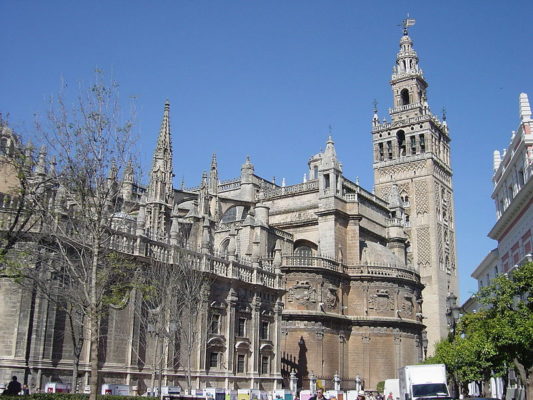Tracing Power and Presence through Architecture.
Architecture is not just about buildings. It is affected by a variety of factors: geography, geology, and climate will determine the locations and the materials used, but it is human ingenuity, needs and culture that will determine the forms adopted.
Looking afar at the changing fortunes of Islam (or al-Andalus) and Christianity in the Iberian Peninsula is like looking at a chess board where religious and secular buildings (e.g. mosques, palaces, castles) were put strategically into place, broadcasting their presence and with that the conquest of the enemy.
As the Christians advanced south, they took over, transformed or destroyed mosques, fortifications and houses (as the Muslims had done with Christian buildings during their conquest of the Iberian Peninsula in the 8th century) or built churches, castles, palaces that carried their own identity. As a result, we can trace the fortunes of both sides by studying their building patterns.
In Spain we are particularly fortunate to have had extended contact between two civilisations. Sometimes they were civil to each other, sometimes not so civil, and history shows us that eventually they could not share the same space.
Still, in their architecture they have left a visible dialogue of their encounters and witnesses of their respective ways of seeing the world.
The three jewels of Andalusia: Córdoba, Seville and Granada, offer unparalleled opportunities of seeing both civilisations close up: the Great Mosque of Córdoba with the Christian Church embedded in it,the giant Gothic Cathedral of Seville served by its Muslim minaret, La Giralda, and a Christian Renaissance palace enclosed within Moorish Alhambra.


In each of these cases, it was the Christians who moved in and took over and stamped their presence with their buildings, and with that their culture.But ironically, over the years these Moorish buildings, and many others scattered throughout much of the country, have become part of the fabric of “Spain.” Indeed for many travellers they are “typical” of Spain.
But there is a danger in reducing Spain to Andalusia or to the romantic, exotic country of 19th-century travellers. And too much can be made of the generosity or tolerance of Christians in not destroying totally Muslim buildings, or vice-versa during the pre-eminence of Muslim al-Andalus. There were pragmatic reasons -expenses and manpower saved-, and ideological -buildings as trophies to be used by the conquerors.
The return of Islam to some quarters of Spain today, and especially in Córdoba and Granada, is tolerated but not necessarily greeted with enthusiasm by all. Some Muslims talk nostalgically of the return of al-Andalus (the return of al-Andalus was frequently called for by Osama bin Laden) and in some places attitudes are hardening to their presence.
As a result, permission to build a large mosque in the Albaicín in Granada, for example, was granted only after years of struggle, and obstacles were found to delay its construction. Of course, the mosque forms a statement, and given Spain’s history, what it says to many Spaniards is that “they” are back. Whether Spaniards are ready for that remains to be seen.
P.S.The horrific Madrid subway bombings of March 11, 2004, were justified in part by the loss of al-Andalus. In a lecture at Georgetown University in the USA in September 2004, the former conservative Prime Minister of Spain, José María Aznar, argued that his country`s problems with Islamic terrorism began when Medieval Christians refused to accept Muslim hegemony, and started a long battle to recover their identity.
Image of Cordoba Cathedral: http://en.wikipedia.org/wiki/File:Mezquita_de_C%C3%B3rdoba_desde_el_aire_(C%C3%B3rdoba,_Espa%C3%B1a).jpg
Image of Seville Cathedral: https://en.wikipedia.org/wiki/File:Sevila10.JPG


